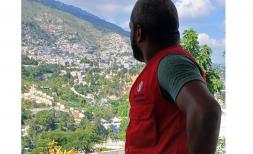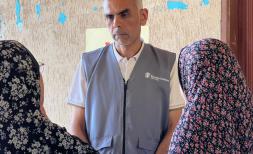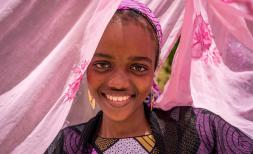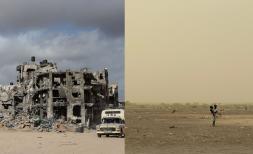Fleeing the Climate Crisis: The forced migration of children and their families in Latin America and the Caribbean
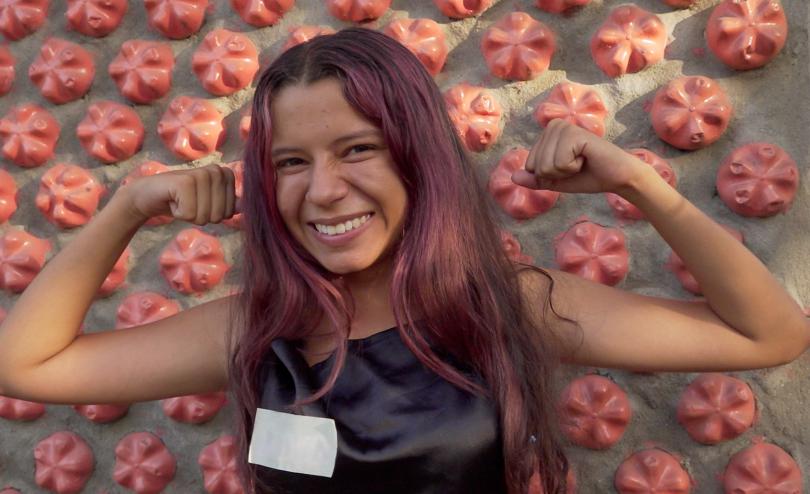
The climate crisis is pushing children and their families to flee their houses and their countries in Latin American and Caribbean (LAC) region. Extreme weather combined with other vulnerabilities such as poverty and inequalities, have undermined food, water, and even economic security.
“Climate change affects farmers and land workers. The weather can have sudden changes impacting their harvests and constraining access to food for the family (...) I have seen many people with their children living on the street, without even having money for food (…)", says a 16-year-old boy from Peru.
“My house was full of plants, we had pumpkin, peaches, flowers and fruits, but we had to leave my house because everything dried up, we harvested the crop and had to move”, says an 11-years-old adolescent from Mexico.
Children’s rights in LAC are being hampered by the combined crisis of climate emergency and inequality. The number of children displaced by floods and storms has been growing in recent years, exposing children to violence, exploitation, and abuse. In 2020, the number of displaced people reached 30 million, 13 million more compared to the previous year [1].
In this region, it is estimated 39 million children face double threat: poverty and extreme weather. In addition, 1 out of 3 of them also suffer conflicts. A third threat.
As part of Save the Children's efforts to empower children and adolescents, we have held hearings to listen to them and understand how this crisis affects their communities.
A boy from Guatemala said “with the storms, everything (commodity prices) went up, except our parents' income”.
"Climate change puts many children at greater risk, especially those with lower incomes or fewer opportunities to escape the risks" said an 11-year-old girl from Peru.
We are also concerned with how the effects of climate change are also affecting children’s mental health.
“I’m a bit scared when it rains heavily. I have been since I was a child. In the past, I lived in a house near a cliff and when it rained heavily, it collapsed more and more and I was afraid that there would be a landslide or something like that” expressed and adolescent girl from Venezuela living in Peru.
Children and adolescents also expressed to us that it’s time for them to also be considered when taking action and therefore, they stressed the importance of the response to the climate emergency being a multi-actor one.
“The authorities, together with us, adolescents and children, can work together to put forward proposals for improvement, so that together we can change the situation, besides the fact that a healthy environment is part of our rights and is something we demand" says Oriana* a 15-year-old adolescent from Venezuela living in Peru.
Oriana*, a passionate climate activist, believes there is still time to save the planet. She makes handicrafts out of things that people consider rubbish. Looking forward, she dreams of building an association of empowered female artisans who do the same.
“At school, at home, I recycle. My mum makes bags out of bags - she knits them. At school, we recycle plastic bottles and cans. We sell them and collect money for the school because the school is badly damaged. And plastic lids are given to children with cancer (…)” she added.
We believe as an organization, that by empowering children and adolescents to raise their voices we can help world leaders understand the importance of taking into account their needs and putting them at the centre of global climate action. This is where the idea of our latest campaign “Generation Hope” was born from. We hope through this platform to advocate to give children a voice but also, together with them, to build solutions that lead to creating a greener and more equal world for future generations.
Interested in meeting inspiring child activists like Oriana*? Check them out here.
[1] https://www.unesco.org/es/education/right-education/climate-change-displacement#:~:text=En%202020%2C%20el%20n%C3%BAmero%20de,en%20la%20nueva%20norma%20mundial.
